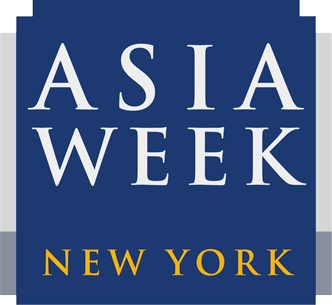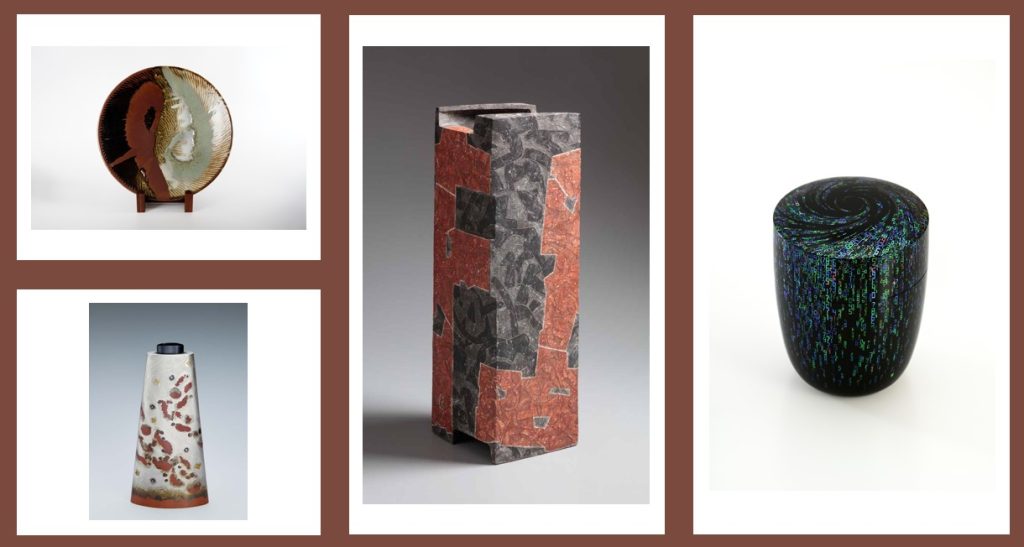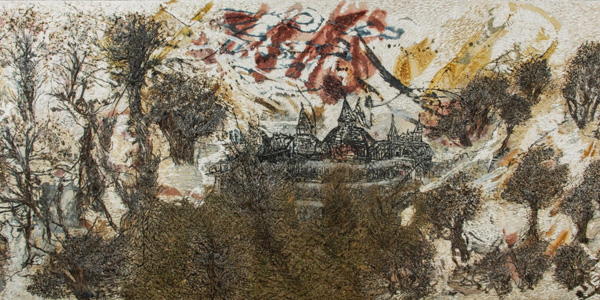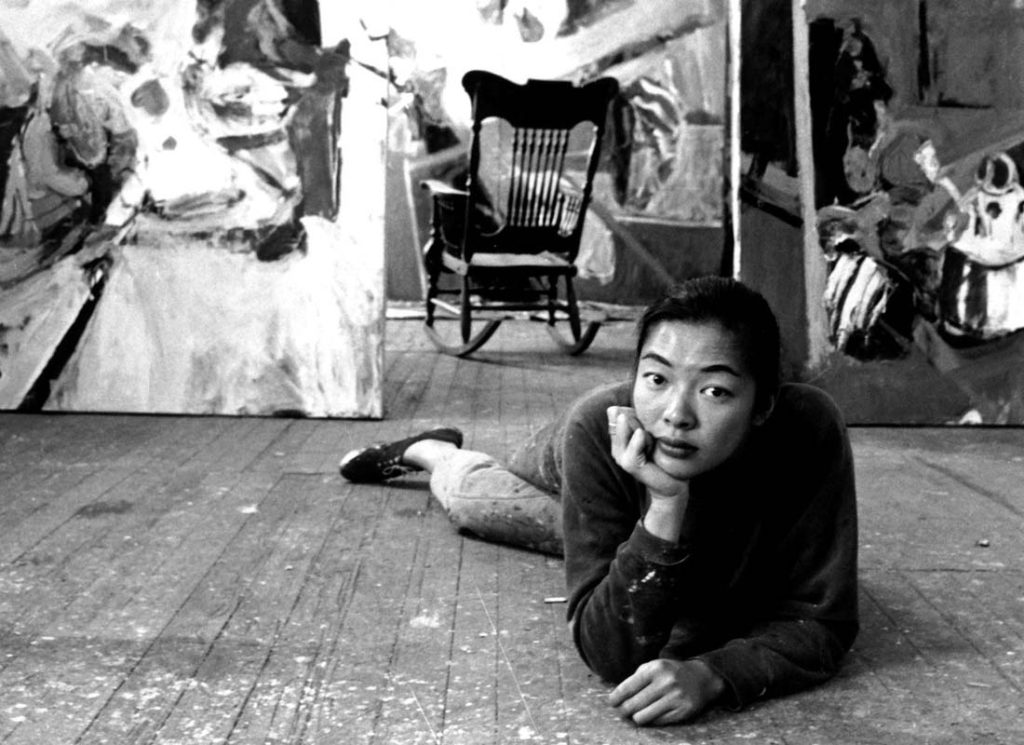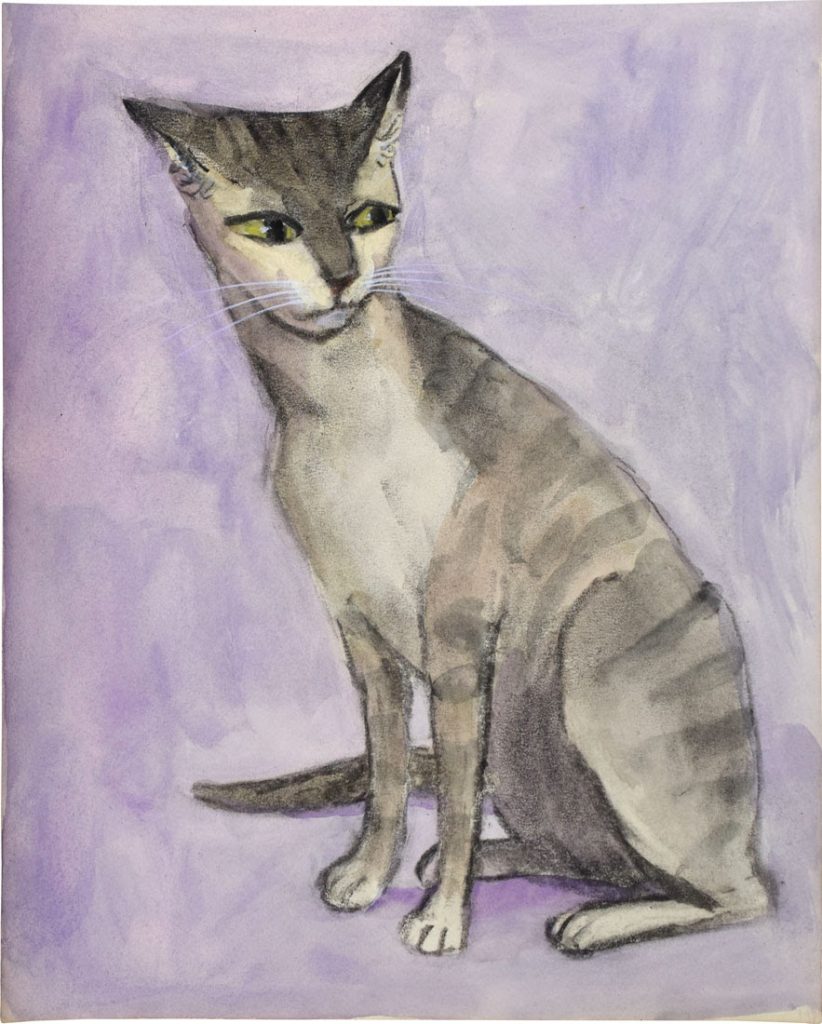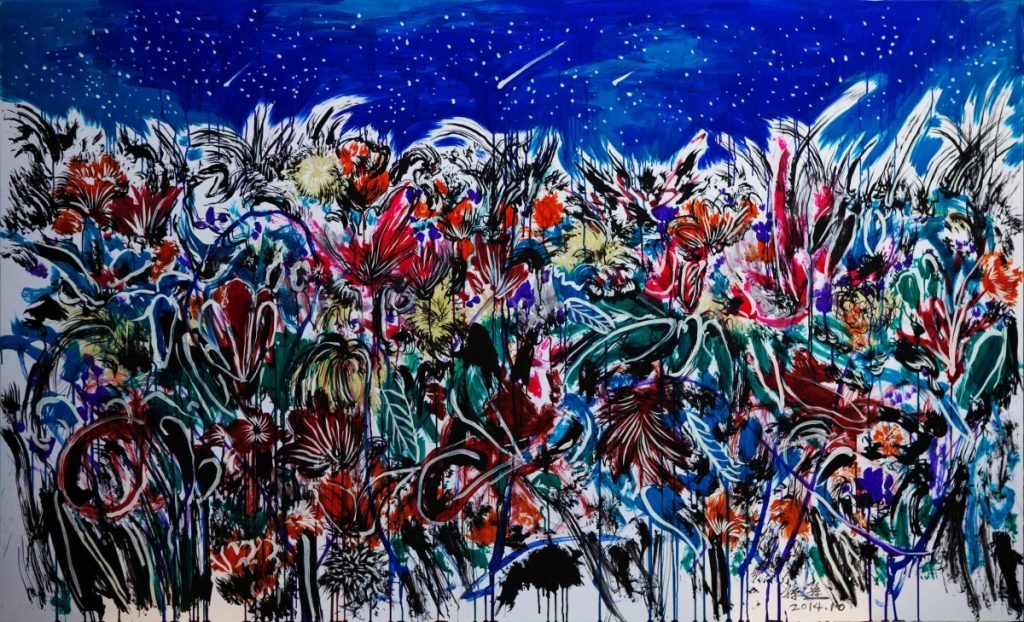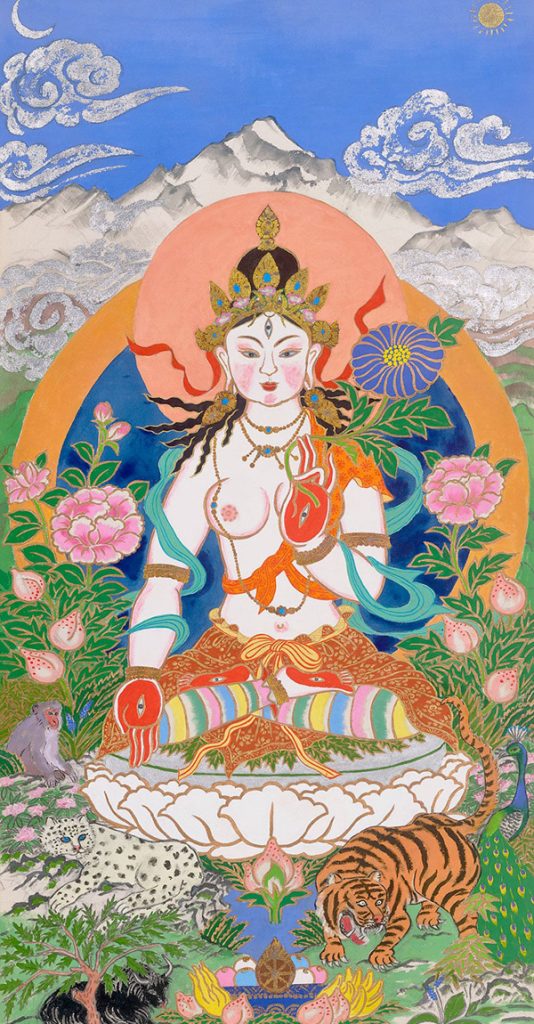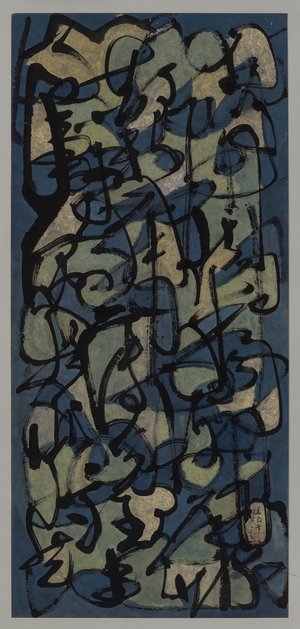L-R: Shimaoka Tatsuzō (1919-2007), Iron Fish Trailed on Rope Impressed Inlay, Heisei period, 1990s, stoneware, Dai Ichi Arts, LTD; Oshiyama Motoko (born 1957), Kakuhanmon Vase “Shunen” (Spring Festival), 2022, silver, brass, shakudo and copper; Wada Morihiro (1944-2008), Kakugenki (Brilliance and Mystery Vessel), 1997, glazed stoneware, Joan B Mirviss LTD; and Teramasu Ikeda (born 1987), Tea Caddy Winter Wind, 2022, lacquer (urushi, wood, abalone shell), Ippodo Gallery
Four Asia Week New York dealers are preparing exhibitions of innovative and stunning artworks by Japanese contemporary artists in ceramic, metal, and lacquer.
Dai Ichi Arts, LTD
Intangible Heritage: The Art of Japan's Living National Treasures
March 1-31, 2023
Opening reception: Thursday, March 16
18 East 64th Street, Suite 1F
Dai Ichi Arts is delighted to present an exhibition of the exceptional works of Japan’s ceramic Living National Treasures, on the occasion of March Asia Week 2023. The exhibition showcases the masters of a range of ceramic techniques from porcelain to stoneware; from celadon to iron glazes. These sublime artworks take the potential of ceramics art to new heights.
Ippodo Gallery
Terumasa Ikeda: Iridescent Lacquer
March 16-April 16, 2023
Opening reception March 16, 6-8pm
32 East 67th Street, 3rd Floor
Ippodo Gallery New York illuminates a modern lacquer technique that disrupts preconceived notions of the raden (mother-of-pearl inlay) tradition. Terumasa Ikeda: Iridescent Lacquer showcases Terumasa Ikeda’s revolutionary laser-incised raden technique, a method the artist spent eight years developing. Ikeda was born and resides in Kanazawa, known as the country’s preeminent hub for lacquerware production. Arabic numerals, computer screens, and digital signals—all assembled from abalone shell—adorn the twenty object boxes, tea caddies, and incense containers.
Joan B Mirviss LTD
Painted Clay: Wada Morihiro and Modern Ceramics of Japan
March 16-24, 2023
39 East 78th Street, Suite 401
Standing at the center of a long tradition of ceramic surface decoration is Japanese artist Wada Morihiro (1944-2008), a revered master of intricate surface patterning. For Asia Week New York, Joan B Mirviss LTD is thrilled to present an exhibition of this past master’s oeuvre alongside the many Japanese artists who paint on clay, employing a wide range of techniques. These works by Wada’s predecessors and successors will stand in conversation with those by Wada. A fully illustrated catalogue with relevant essays will accompany the exhibition and will be available online.
Onishi Gallery
Heated Colors, Hammered Forms: Female Metal Artists of Japan
March 16-24, 2023
Opening reception: Thursday, March 16, 5-8pm
521 W. 26th Street
Onishi Gallery is proud to feature the best of Japanese metalwork and represents many of its leading contemporary practitioners, including nine who have been designated Living National Treasures. The March exhibition, Heated Colors, Hammered Forms: Female Metal Artists of Japan, turns the spotlight on the contribution made by women to the revival of this demanding art form, highlighting seven female artists who are distinct in their personal modes of expression, but united in their embrace and adaptation of traditional methods.

